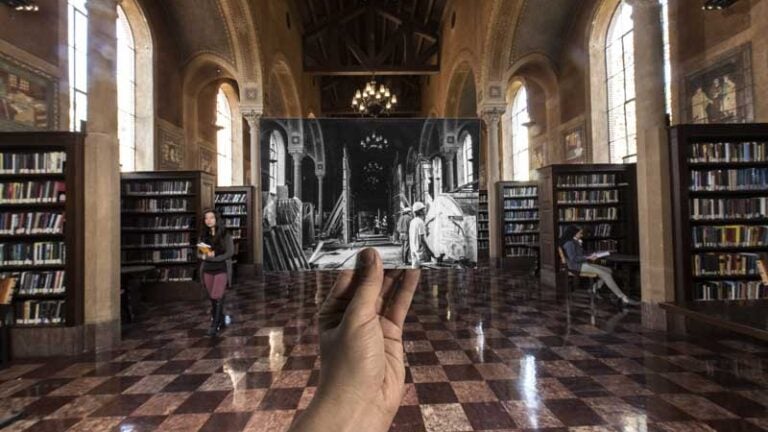
(Photo/ Dustin Snipes)
Hoose Library: Preserving A Timeless USC Landmark
From its priceless manuscripts to its unique architecture, the Hoose Library of Philosophy is a beloved USC landmark.
For generations of students seeking a quiet spot for study and reflection, the James Harmon Hoose Library of Philosophy has been a favorite refuge. The space feels timeless, with its soaring cathedral ceiling, colorful tile mosaics and curving arches. The Hoose Library of Philosophy is the oldest continuously operated library at USC, but preserving and maintaining the historic space is very much a modern endeavor.
The Seeley Mudd Hall of Philosophy, where the library is housed, was completed in 1930 to broad acclaim. Its architectural elements were inspired by Romanesque, Byzantine and arabesque styles. The building’s unreinforced masonry structure was the standard in its day, but over the decades slowly fell behind modern seismic safety guidelines.
In 2003 (inset photo) the university embarked on a major renovation to ensure that the building and all of its fragile holdings were well-protected from earthquake damage. Over four months, wood carvings, painted walls, stained glass and plaster ceilings were carefully covered or removed for storage as workers added shear walls and steel bracing to the building and roof.
After the renovation, touch-up artists matched the patina around the wall art to hide drilling and cut marks, and books and art pieces soon returned to the space.
The Hoose Library of Philosophy today houses some 50,000 works. It’s especially rich in texts detailing the history of modern philosophy, analytical philosophy and metaphysics. The library includes two collections of rare books that are housed in Special Collections on the second floor of the Doheny Library. The first group, called the Flewelling Collection, encompasses medieval manuscripts, renaissance incunabula (texts printed in Europe before 1501) and early editions of seminal philosophy works in philosophy from the 16th and 17th centuries. The second grouping — the Gomperz Collection — features first editions of key philosophical works from the 18th and 19th centuries.



